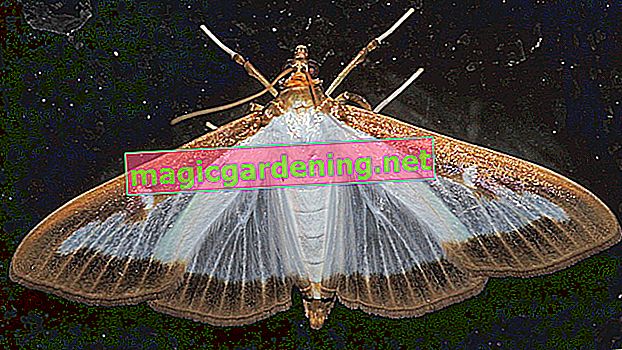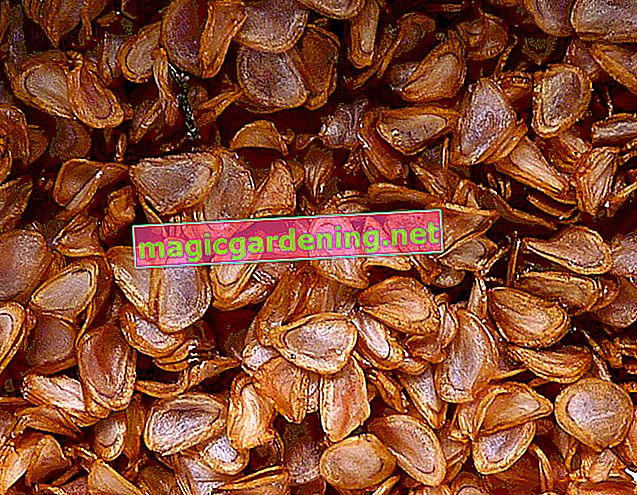
Typical fungal infections on boxwood
There are a number of harmful fungi that exclusively or preferentially attack the boxwood. These include the following candidates:
- Cylindrocladium buxicola: also known as boxwood mushroom, causes the dreaded shoot death
- Volutella buxi: causes boxwood cancer, causes shoot deaths
- Puccinia buxi: causes boxwood rust, recognizable by red-brown pustules on the upper side of the leaf
also read
- Preventing, recognizing and combating powdery mildew on boxwood
- Boxwood: Detect, treat and prevent an infestation with the boxwood moth
- Boxwood pests: recognize fleas and fight them effectively
Characteristic features of every fungal disease are brownish discolouring and drying up leaves and shoots, whereby in the initial stages only yellowish to brownish spots appear on the foliage. Usually not the whole box tree is affected, but only part of the branches and shoots. If the infestation is advanced, white to reddish-brown spore beds can be found on the underside of the leaves, depending on the pathogen.
How to Avoid Yeast Infection Effectively - You Must Do This
Since almost all fungal diseases occur as a result of damp and warm weather, you should take precautionary measures when the weather is appropriate:
- Always water box trees from below, never over the leaves!
- Leaves should not be permanently moist if possible.
- Never cut in rain or damp weather!
- Then the risk of infection is highest in otherwise healthy plants.
- Keep box trees moist, but not wet.
- Too moist soil and waterlogging inevitably lead to root rot.
Since weakened plants are also infected, you can strengthen your box trees through optimal site conditions and species-appropriate care. Above all, pay attention to a balanced supply of water and fertilizer - in addition to a lack of nutrients, overfertilization can also have serious consequences. Furthermore, an airy, sunny location is ideal, and by observing the recommended planting spacing, you can do a lot to keep your book healthy.
Fight fungal infestation effectively - Here's how
However, once the box is attacked by a fungus, only scissors can usually help. Cut out the diseased parts of the plant generously, whereby a strong pruning does not harm the box. It only takes a long time to regain its original size and shape due to its slow growth. Fertilize the plant to stimulate new growth, and you can first treat it with home remedies against the fungi. A field horsetail broth that you have prepared yourself has proven to be effective. If the measures mentioned do not help, all that remains is the use of chemical fungicides - which should be carefully considered in the home garden due to the side effects! - or the clearing.
Tips
If a white to grayish, wipeable coating is visible on the upper side of the leaves, it is likely powdery mildew. In contrast to other fungal diseases, this arises in bright sunshine and warmth, which is why it is also known as “fair weather fungus”. You can get this infection under control if you treat the infected boxwood with a mixture of fresh whole milk and water (ratio 1:10).








